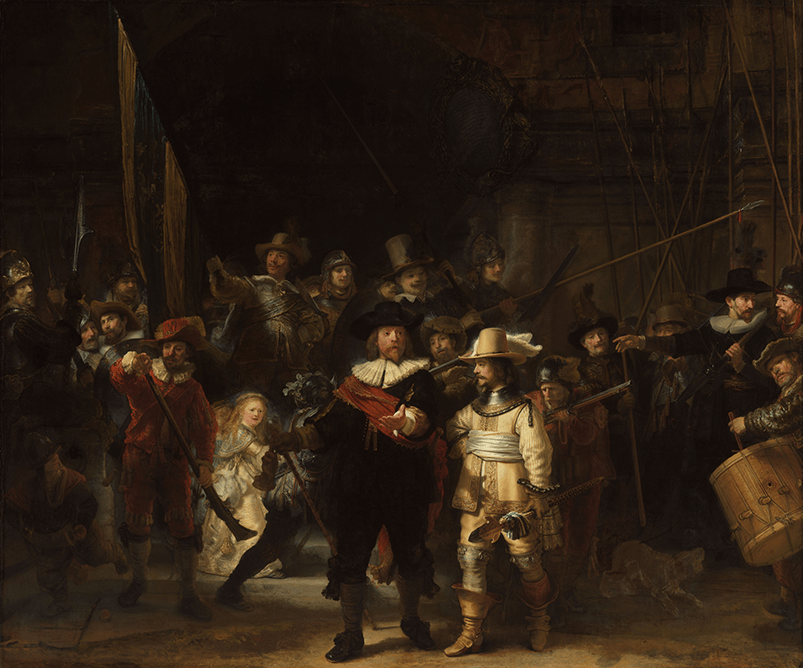


Rembrandt van Rijn
1606 – 1669
Rembrandt Harmenszoon van Rijn is the most well-known Dutch painter, etcher, and draughtsman. Also in his own time, the 17th century, his fame went far beyond the national borders. He made about three hundred paintings, three hundred etchings, and two thousand drawings. From the age of seven, Rembrandt attended the local Latin school, which was exceptional for a miller’s son because the enrolment costs were very high. There he was taught about the Bible, classical literature, Latin and, good manners. He also received lessons in calligraphy and painting. At the age of fourteen, Rembrandt was enrolled at the University of Leiden by his parents where he studied literature for a couple of years. Rembrandt also received theology there. There he gained the knowledge of biblical and mythical stories that can later be found in his paintings.
He collected art, curiosities, and oriental clothing such as cloaks and turbans. These objects can often be found in Rembrandt’s paintings. In an inventory from the period in which Rembrandt was struggling financially, it appears that his collection of objects was worth more than 40,000 guilders. Which in those days was a huge amount.
Rembrandt chose to become a painter and opened his own studio in Leiden. Soon he was working with an art dealer who sold his works, which earned him a considerable income. He considered himself a history and portrait painter, was confident and made art in all phases of his life, but especially after 1660 when he made the self-portraits which were admired by everyone.
As of 1631, Rembrandt was known for his own style: he portrayed people in a natural rather than idealized style, he depicted emotions and created dramatic representations using the light-dark effect. Like Vermeer he was also influenced by the Italian artist Caravaggio, the master of the dramatic use of light and dark in his paintings.
Rembrandt’s oeuvre is divided into five periods, starting with the Leiden period (1625-1631). From approximately 1629 Rembrandt’s development as an artist started, when he began to work with contrasts and became interested in lighting techniques. After 1640 a period of austerity occurs. In the 1650s, his brushstrokes were clearly visible, and the colours were richer.
In the decade after the completion of The Night Watch and his wife Saskia’s death, there was a turning point in Rembrandt’s works. The production of the paintings decreased considerably. He no longer painted portraits and drawing and etching became his main activities.

Rembrandt van Rijn, The Night Watch, 1642, oilpaint on canvas, 379.5 x 453.5 cm. Collection Rijksmuseum, Amsterdam
